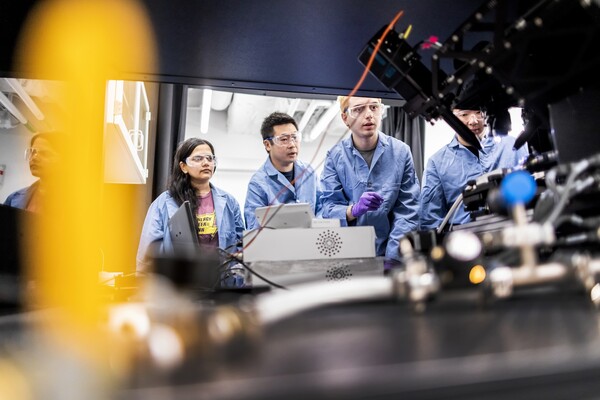
nocred
Community policing is meant to combat citizen mistrust of the police force. This policing model was developed in the mid-20th century to help officers work more collaboratively with the communities they are assigned to. The hope was that activities such as town hall meetings and “meet and greet” foot patrols would create a partnership between citizens and the police force, increasing trust and ultimately leading to reduced crime. Studies in the 1990s from the United States, the United Kingdom, and Australia showed that these goals can be achieved in certain circumstances. Many metropolitan areas in the Global North have since included community policing as part of their standard operating procedures.
However, a recent study of six locations in the Global South—Brazil, Colombia, Liberia, the Philippines, Uganda, and Pakistan—showed no significant positive effect associated with community policing across the range of countries. The study, published in Science, was co-authored by a large group of researchers including political scientists Dorothy Kronick and Guy Grossman of the School of Arts & Sciences and affiliated with the Penn Development Research Initiative.
Penn Today spoke with Grossman and Kronick to discuss the study's findings and police reform.
Grossman: Community policing is an approach to policing that many have been touting as one of the most promising reforms that can be implemented to, at least according to theory, help increase trust between those that are policed and those responsible for law and order.
Both in the Global North and in the Global South, the relationship between communities and law and order agencies, including the police, are sometimes strained. Just think about the summer of 2020 after George Floyd’s murder. That strain is a problem because law and order is one of the main functions of the state, but the police cannot maintain it without at least some cooperation from the public.
The public can help the police identify hot spots, they can identify problems, they can identify individuals who might be engaged in criminal activities. It’s very hard for the police to do their work without cooperation from the public, but we know that people are not likely to cooperate if they don't trust the police. So, we focused on community policing because it has been touted as one of the most cost-effective policing reforms, but the problem is that the evidence base was relatively weak before we engaged in our study.
Globally, there hasn’t been a lot of rigorous research on community policing. Basically, 80% of the studies are concentrated in three countries: the U.S., the U.K., and Australia. Conditions in developing countries are very different. Base levels of trust in police might be lower, for example, given the history of authoritarian rule. We thought it was important to test whether these promising results from the Global North are translated to the Global South. That was the main motivation of the study.
Kronick: We’re at this moment of a global crisis in policing in the wake of George Floyd’s killing and police killings in other countries. We’ve seen hundreds of thousands if not millions of people around the world come out to protest the police. Understandably, that makes both governments and police agencies want to do something to fix these problems. Our study shows that community policing is not necessarily that something. The point of our study is not that we should stay away from community policing. The point is that governments should not assume that the promised benefits will necessarily materialize. We need pilots, we need rigorous evaluations like the ones that we did in this study, in order to really understand when we can and cannot expect the benefits.
Grossman: The ripple effects of Floyd’s killing and other incidents were manifested globally. There have been massive demonstrations in Nigeria, Colombia, and Brazil around policing. While interstate conflicts still exist, and civil war still exists in parts of the world, when we think about what is the biggest factor that contributes to insecurity for citizens, it’s not necessarily these interstate wars or civil wars but from crime-related violence. Increasingly, students of conflicts are turning to policing because we recognize that police forces are failing in the most basic function of the state, which is protecting life and property. It’s a real crisis of legitimacy, and it’s a crisis of trust. We come to this project following a movement that is looking for solutions for this big problem.
Kronick: Historically in political science we have a huge body of work on interstate war and on civil war, and over the last 10 years we have a growing and really exciting literature on policing: on how to deal with organized crime, on body-worn cameras, on interventions to reduce abusive tactics. But it is a newer literature, and our study very much fits into that newer work.
Kronick: I worked on the part of this project that was in Colombia, which has a long history of community policing. So, we were building on an existing tradition. We were working in Medellín, which 30 years ago was one of the most violent cities in the world, and now that is absolutely no longer the case. When we started this project, in 2016, the city was still facing major security challenges. But this was not a war zone, and the police were not in war mode. They were trying to improve relations with communities, and, in fact, the implementation was very extensive. We held hundreds of police community meetings, and some of them were contentious, but many of them had the dynamic that I think has been described in previous studies: police explaining what their roles are, what their limitations are, when they’re responsible for, giving citizens their direct phone numbers, and trying to increase trust and contact.
Our results in Colombia do show some changes in beliefs about police capacity. There’s some evidence that people have a different view of what the police are capable of, as you might expect. Our results are consistent with the idea that the meetings had big effects on the people who actually attended. What we don’t see is a lot of evidence of the expansion or filtration of those changes in beliefs to other people in the community. That’s one thing that is different from some previous studies.
Grossman: I was part of a research group that was looking at Uganda. What we found was a bit of a disconnect between decisions made at headquarters and what was happening on the ground. We had a lot of buy-in from the heads of the police, a lot of excitement at the headquarters, but that doesn’t necessarily mean that once you get to the level of the beat, that the officer who needs to organize these community meetings or who needs to do the foot patrol in rural areas hundreds of miles from the capital will actually do that.
If you don’t compensate them, if you don’t supervise them, if you don’t make it very clear that there will be consequences if they don’t do what is expected, then you’re basically telling them to do more work without providing them a mechanism or incentive to do that.
More so, when we say ‘community policing,’ a lot of the focus is on the policing side and not enough on the community side. And we found something very similar in Uganda to what Dorothy found in Colombia, which is for those who are actually in communities where they had a capacity to mobilize people and get people to these meetings and pressure the police to actually hold these meetings, we found quite positive effects. We didn’t find it in communities that didn’t have this capacity to mobilize residents. In other words, it takes two to tango. Community policing is not just about changing what the police do and how they engage with the community, but it also requires the community to mobilize people and maybe suspend the distrust for a bit in order to engage with the police in a different way. What we found is that was not always the case.
Kronick: The idea was from the beginning to coordinate the nature of the intervention, the nature of the measurement, the design in ways that would make it possible to look at the results all together at the end. It’s an effort called ‘Metaketa,’ which is a Basque word for accumulation. The idea is that, in order to accumulate knowledge in the social sciences, it’s not enough to look at one data point because it might be unrepresentative or a fluke. In order for us to accumulate knowledge in the social sciences, it’s best to have multiple studies that ask that same question.
The study of community policing is part of an effort not only to simply have multiple data points on the same question but to coordinate the studies in a way that will ensure that the interventions are more or less comparable, that we measure things in a very similar way, and that we analyze things in a similar way.
We coordinated so that the survey instrument that we implemented in all countries was basically the same one with just small changes to reflect local conditions. We worked together on six different teams in six different countries. Multiple researchers are all working together on the same survey questionnaire that will be asking very similar questions in order to ensure that we measure things in a very similar way.
Grossman: For community policing to have the intended benefits, a lot needs to take place. Police need to devote a lot more resources, there needs to be more top-down supervision and there needs to be more engagement on the side of the community, especially in places that start from a low base of trust in the police. If police haven’t maintained a good relationship with communities for dozens, sometimes hundreds of years, they can't just come and say, ‘Hey, we’re doing these town hall meetings, we’re with you now.’ It takes more than that.
(Stephanie M. McPherson, writing for the Massachusetts Institute of Technology, contributed to the report.)
Dorothy Kronick is an assistant professor of political science in the School of Arts & Sciences at the University of Pennsylvania. She studies Latin American political economy, focusing on Venezuela and the politics of crime and policing.
Guy Grossman is a professor of political science and the founder and co-director of Penn’s Development Research Initiative. His research is in applied political economy, with substantive focus on the intersection of technology and governance, political accountability, forced migration and conflict processes, and a regional focus on sub-Saharan Africa and Israel-Palestine.
Kristen de Groot

nocred

Image: Pencho Chukov via Getty Images

The sun shades on the Vagelos Institute for Energy Science and Technology.
nocred

Image: Courtesy of Penn Engineering Today